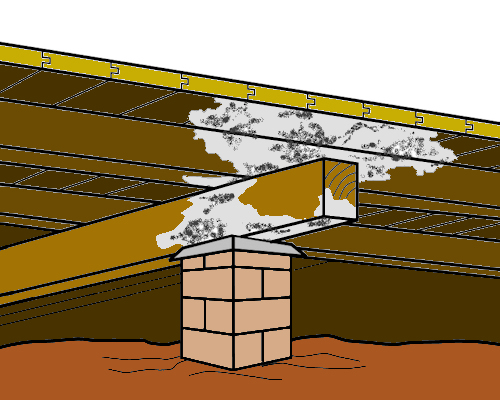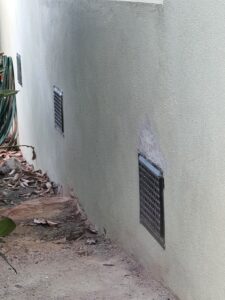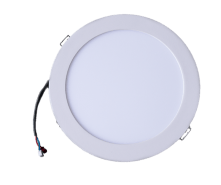Last Updated on November 21, 2023 by geeneza tapangan
When it comes to maintaining a comfortable and healthy living environment, homeowners often prioritize proper ventilation within their living spaces. However, it is equally important to ensure adequate ventilation in the often-overlooked area beneath our homes – the subfloor space. Neglecting subfloor ventilation can result in the accumulation of moisture, leading to a host of structural issues and potential health hazards for the occupants of the house.
Unfortunately, many homes are constructed with poor subfloor ventilation systems, while others may lack any ventilation systems altogether. In such cases, it becomes crucial to install high-quality ventilation systems to safeguard the integrity of the building structure and promote a healthy lifestyle for those residing within the house.
The Risks Associated with Poor Sub-floor Ventilation
The negative consequences of poor airflow in the subfloor will be felt throughout the house in homes without any sub floor ventilation or with insufficient ventilation systems. The main effect of inadequate ventilation is that it traps humidity in the subfloor space, where it can readily spread throughout the house.
Mould can grow in the subfloor if there is a build-up of moisture there. Mould growth is clinically proven to cause a wide range of diseases and allergic reactions that necessitate rapid medical attention, in addition to harming the structure of the building. Moreover, mould’s awful appearance and smell can easily ruin the atmosphere within any home.
If your subfloor stays wet or damp for a long time, it can cause the wooden parts of your building to expand. This leads to the floors becoming warped, bent, and eventually completely ruined. Not only does this require costly repairs, but it also makes the building highly susceptible to termite infestations.
Causes of poor subfloor ventilation
- Insufficient airflow
- Subfloor vents are being blocked by plants or by recently built patio flooring or concrete paths
- Issues with damp-proofing
- Obstructions in cavity wall vents
Signs that Indicate Poor Subfloor Ventilation
- If there is a persistent musty smell throughout the building
- The presence of fungi and mould growth on the walls
- When you observe floorboards lifting or splitting
Addressing Poor Subfloor Ventilation Issues
Thankfully, there are proactive steps you can take to address the issue of inadequate subfloor ventilation and effectively resolve the problems caused by excessive moisture in your subfloors.
- Make sure that the water around the building is appropriately directed to ensure effective drainage.
- Regularly check and maintain the cleanliness and unobstructed state of all vents to ensure optimal airflow and ventilation in the subfloor.
- Ensure the structure is free of any leaky pipes or plumbing fixtures by taking the necessary precautions.
- Keep gutters clean to prevent water build-up in the roof. All water coming from the gutters must be redirected away from the building.
- Ensure that there are no areas designated for storage within the subfloor to avoid the accumulation of unwanted water.
- During house construction, ensure that the subfloor has adequate space. This will improve ventilation and make the subfloor easily accessible for future repair work.
- Install solar-powered subfloor ventilation fans to improve airflow and reduce moisture levels. Solar subfloor fans produce superior results compared to powered fans and are eco-friendly and cost-effective.
If you’re facing persistent subfloor issues and yearn for a lasting resolution, don’t hesitate to reach out to us at +61 1300 609 994. With our extensive experience of over fifteen years in installing subfloor ventilation systems, we have effectively tackled dampness problems for numerous residential and commercial buildings. Take control of your subfloor environment today by contacting our dedicated subfloor consultants for a complimentary, no-obligation quote.
Let us help you achieve a healthier and more comfortable living space. Enquire now!
Frequently Asked Questions
What are the risks associated with poor subfloor ventilation?
In homes lacking proper ventilation, trapped humidity in the subfloor space can result in widespread moisture issues. This includes mould growth, leading to various health problems, such as allergies and respiratory issues, while also compromising the building’s structural integrity.
What factors contribute to poor subfloor ventilation?
Common causes of poor subfloor ventilation include insufficient airflow, blockage of subfloor vents by plants or structures, problems with damp-proofing, and obstructions in cavity wall vents. Identifying and addressing these issues is essential to maintaining optimal ventilation in the subfloor.
How to Deal with Poor Subfloor Ventilation?
To mitigate the effects of excessive moisture, homeowners should redirect water away from the building, regularly clean and ensure unobstructed vents, inspect and fix leaky pipes, maintain clean gutters, avoid subfloor storage, plan for adequate subfloor space during construction, and consider installing solar-powered subfloor ventilation fans for improved airflow and moisture reduction.
What makes solar subfloor fans an effective underfloor ventilation solution?
Solar subfloor fans offer an eco-friendly and cost-effective solution to improve subfloor ventilation. Their sustainable operation, powered by solar energy, not only reduces energy costs but also enhances airflow, effectively combating moisture issues and promoting a healthier living environment.





